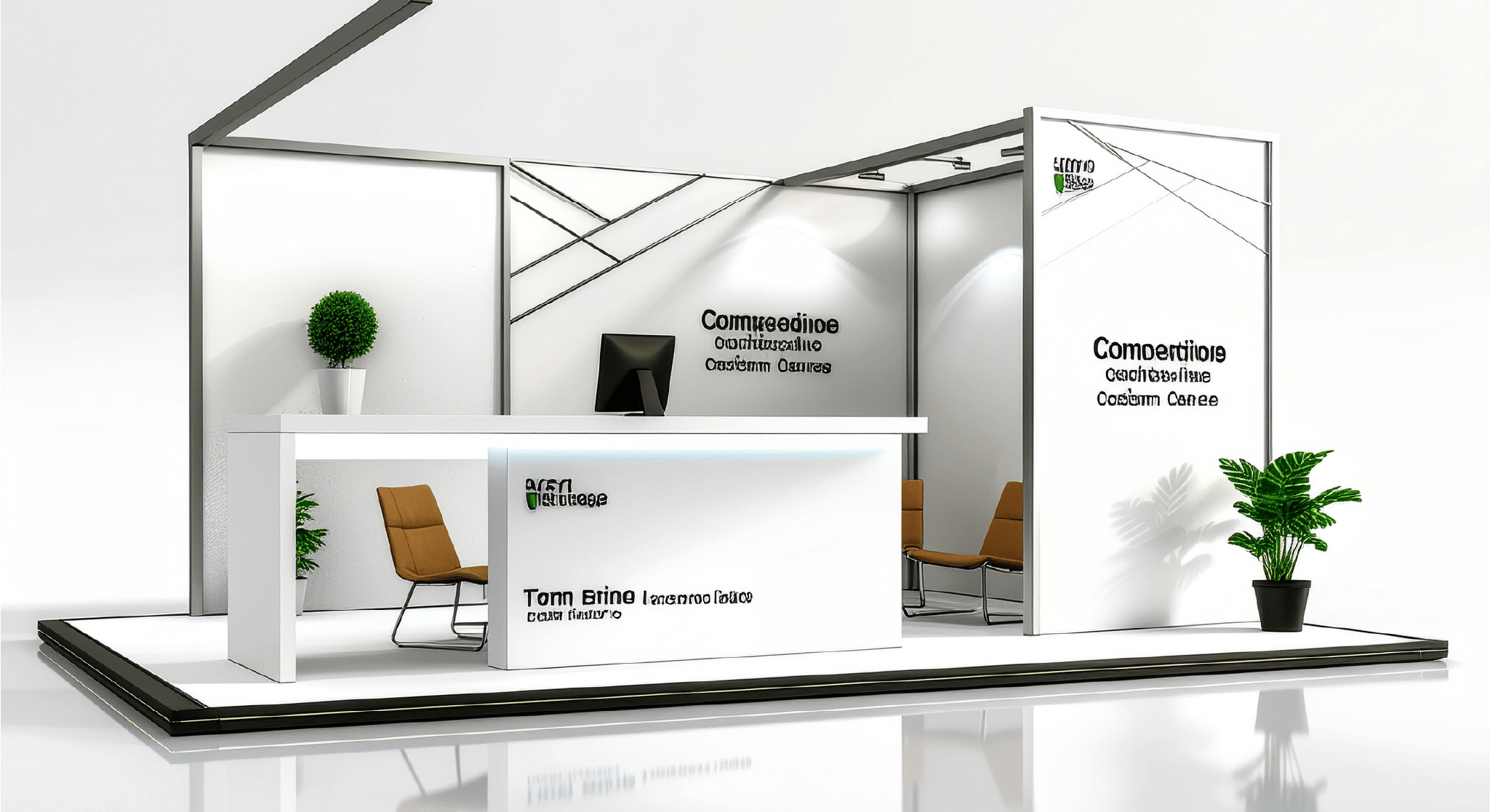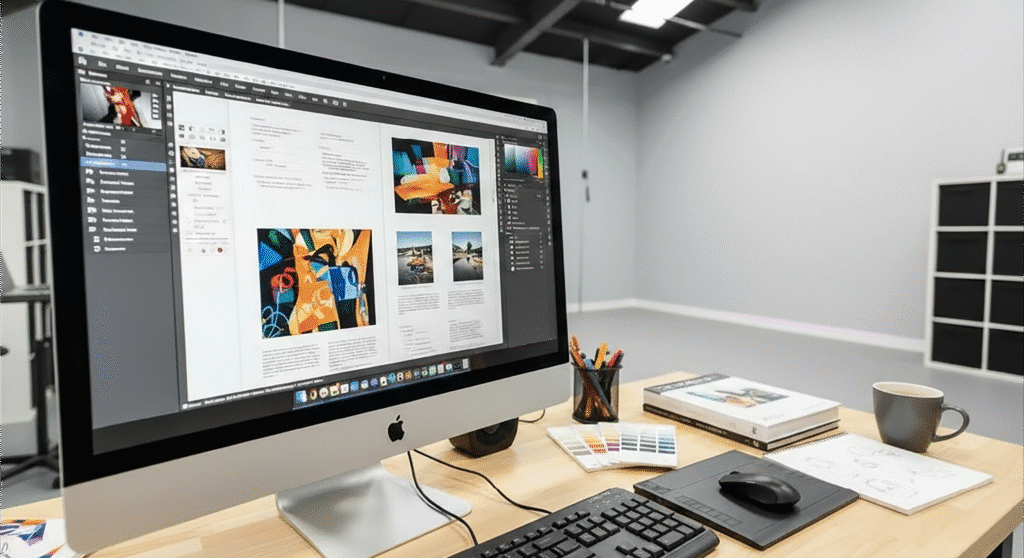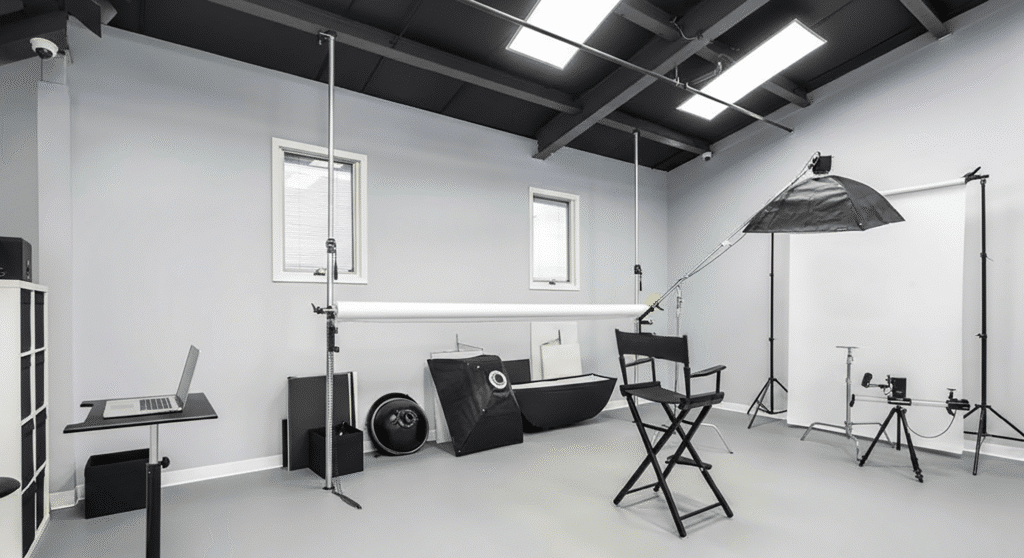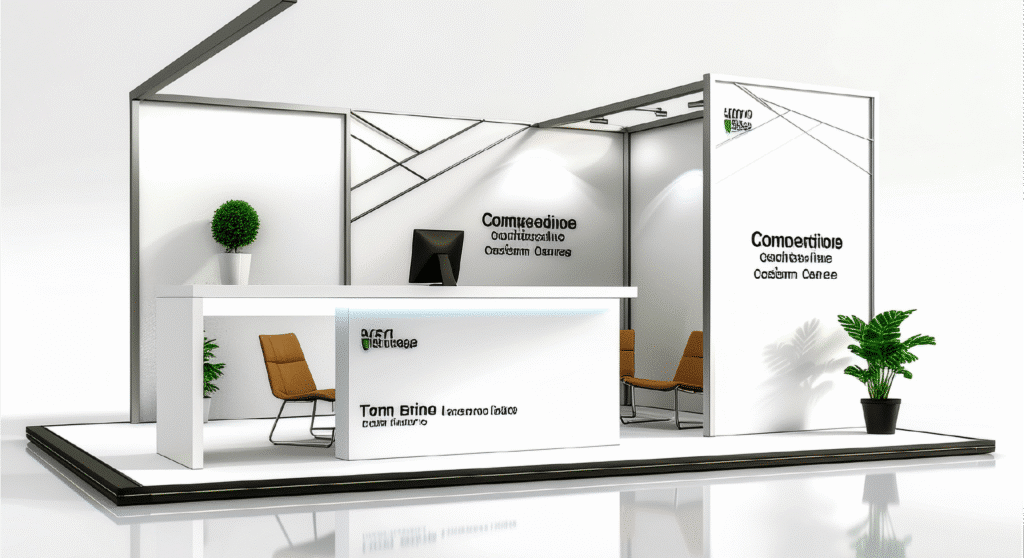In the dynamic environment of a trade show, your booth is much more than just a physical space; it’s the epicenter of your brand for the entire event. It’s your 3D billboard, your meeting room, and your primary lead generation tool, all rolled into one. However, in a sea of competitors all fighting for the same attention, how do you ensure your investment is not just visible, but memorable and, above all, profitable?
The answer lies in a design that combines strategy, psychology, and creativity. A successful booth doesn’t happen by accident. It’s the result of meticulous planning that transforms a space into an experience. Here are the keys to designing a booth that stops attendees in their tracks, starts conversations, and generates real business opportunities.
1. The Strategy: The Blueprint Before the Build
Before you think about colors or structures, your booth design must be anchored to clear objectives. A design without a purpose is just an expense.- Define Your Objectives (KPIs): What is the primary goal for the event? It’s not enough to simply “have a presence.” Set measurable goals. Are you looking to generate a specific number of qualified leads, schedule meetings, launch a new product, or increase brand awareness? Your main objective will dictate the design. A booth for lead generation needs conversation areas and demo stations, while one for brand awareness might focus on massive visual impact.
- Know Your Audience: Who are you trying to attract? The design, messaging, and activities must resonate with your target audience. A booth targeting C-level executives should project sophistication and offer a comfortable space for meetings, while one for a more technical audience can focus on interactive product demonstrations.
- Clear and Concise Core Message: An attendee should understand who you are and what you offer in under five seconds. Your main message must be visible from a distance, be free of jargon, and instantly communicate your value proposition. Avoid cluttering the space with too much text.
2. The Visual Design: An Attention Magnet
Once the strategy is defined, it’s time to translate it into a visual design that acts as a magnet in the bustling trade show environment.- Go Vertical: Airspace is your best ally. Use tall structures, hanging banners, or elevated lighting elements to make your booth visible from the main aisles. Standing out above the competition is the first step to attracting foot traffic.
- The Power of Lighting: Good lighting can transform a standard design into a spectacular experience. Use lights to highlight key products, create a welcoming atmosphere, guide the attendees’ gaze, and make your brand—literally—shine. Combine ambient lighting with spotlights to create depth and drama.
- High-Impact Graphics: Use high-resolution, large-scale images. A single, powerful photograph or graphic is far more effective than a cluttered collage. Ensure the graphics are consistent with your brand identity and that the text is legible from afar.
- An Open and Welcoming Layout: Avoid creating barriers. An open design with multiple entry points and no tables blocking the entrance invites attendees to step inside. Create a logical traffic flow that guides visitors through the different zones of your booth, from the welcome area to demo stations and meeting spaces.
3. The Interactive Experience: From Spectator to Participant
People remember what they do, not just what they see. Turning your booth into an interactive space is key to creating a memorable connection and generating quality conversations.- Engage the Senses: Don’t limit yourself to the visual. Offer a multi-sensory experience. You can use ambient music that reflects your brand’s personality, offer quality coffee to foster conversations, or have product demos where attendees can touch and try.
- Technological Integration: Use technology to educate and entertain. Interactive touch screens, virtual reality (VR) or augmented reality (AR) demos, or even a game related to your industry can set you apart and generate a “wow” factor.
- Live Demos: If your product or service can be demonstrated, do it. Scheduled demos attract crowds and allow you to showcase your offering’s value in real-time, answering questions on the spot.
- Hospitality That Invites a Longer Stay: Small details like mobile charging stations, comfortable seating, or free Wi-Fi can encourage attendees to stay longer in your booth. The more time they spend with you, the greater the opportunity to build a business relationship.
4. The Human Element and Lead Generation
Even the most spectacular design can fail if the team isn’t prepared to capitalize on the attention it generates.- A Proactive and Trained Team: Your staff is the face of your brand. They must be proactive, friendly, and well-trained not only on the product but also on how to initiate conversations, qualify visitors, and efficiently capture their information.
- An Efficient Lead Capture System: Forget the business card fishbowl. Use badge scanners or tablets with simple forms to collect contact data. This is not only more professional but also allows you to add notes and qualify leads in real-time.
- Merchandising with a Purpose: Promotional giveaways should be useful and relevant to your brand. Good swag keeps your brand top-of-mind long after the trade show has ended.
- Clear Calls to Action (CTAs): What do you want the visitor to do next? Whether it’s “Schedule a Demo,” “Request a Quote,” or “Enter our Giveaway,” make sure the next step is clear and easy to follow.



